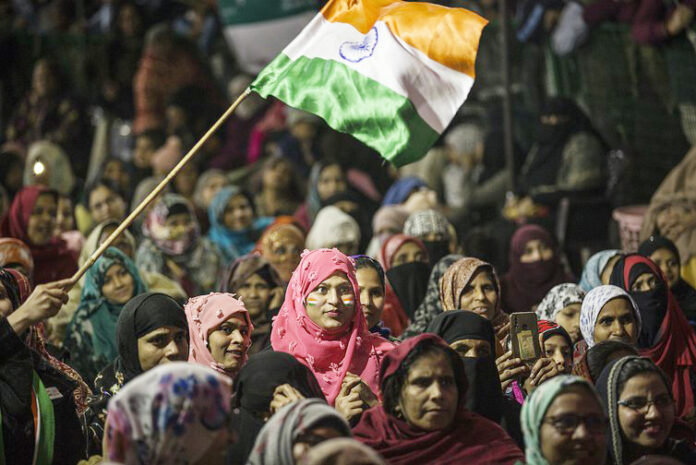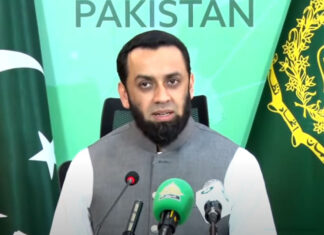Secularism is a complex idea in a sense that how and when it converts into something else is both difficult to define and predict. It treads the road of religion and politics with bare minimum cognitive symmetry in the lexicon of social sensibility. To be socially correct is the key to remaining secular. Separatism of state and church, disestablishmentarianism and accomodationism are the types which revolve around the balance of religion and the state.
State-sponsored atheism is another extreme of the same spectrum. A country with 28 states, eight union territories,400 cities and 600,000 villages is slowly, sloppily but not sluggishly immersing itself in the potion-filled goblet of Hindutva 2.0 .
The first Hindutva state was a historical construct in the times of Bharata, that is, Bharatvarsh,or the state under Chandragupta Maurya and Chankiya, but that did not have the fanaticism of present-day order. India is changing, the political parties of the right, the people and the growing middle class are very off-beat about this. The shock doctrine of capitalism under the ideological umbrella of a new narrative based on the rewriting of history is at the centrestage of Hindutva. The concept of a Hindu race, like that of Aryans, is probably inspired by Hitler’s racial superiority ideas, which led to fascism and fanaticism resulting in World War Two, unfortunately to which Germany became the victim itself.
There is a dire need that Pakistan’s strategic elite and policy sages should take into account these developments and steer Pakistan towards economic stability through long drawn moves on the chess board spread from the Himalayas to the Arabian Sea. Perhaps, it is the time that the competition with India is redefined, basing it on aspiring strategic alignments. The goals and objectives should not lead, rather the systems and environment should dictate.
Interestingly in India, Hinduism and Dravidianism are at a tangent to each other. Dravidian nationalism based on the ideologies of dismantling Brahmin hegemony, and promoting the Telugu, Malayalam and Tamil languages are challenging the caste- and creed-based Hinduism of central and northern India. India south of the line Surat- Nagpur-Raipur is different from the Hindu north.
Despite contesting India in every sphere, the strategic elite and Islamabad-based academia of Pakistan lacked Indian experts in their ranks. How a Hindu mind thinks, radiated from Vedic and post-Vedic influences, is an area which requires a lot of exploration.
But why? The concept of new India is based on the revival of civilizational realizations. These civilizational aspirations are derived from Hindu epics of the Mahabharata and Ramayana along with slokas and mantras which every Hindu chants in the morning. But now the morning mantras are more from epics (Mahabharata and Ramayana) reinforcing the Hindu nationalism and war heroes as a daily ritual.
A very interesting book The Hindus: An Alternative History by Wendy Doniger was published a decade ago, but all copies were immediately pulped and the book was banned in India. That actually defined Hinduism as a religion, mythology and a system of thinking along the civilizational truths shrouded in history.
Recently in an interesting move, India has become Baharat. India was a derivative of Indus, the etymology further takes the usage of Arabic use of Hind and the word Sindhu. Changing the name to Bharat is an attempt to create a historicism based on the foremost Hindu epic of the ten kings war of Dasarajna, fought by Sudas the great- great-grandson of Bharat (son of queen Shakuntala and ancestor of the Pandavas of Mahabharata), the first Vedic king who ruled complete India, including almost all the present day contemporary neighbors.
Now all the three Hindu epics considered as the strategic text for statecraft and governance are war-based, imbued with the constant preparation and execution of Yudh (battle). And the Indian state has actually declared yudh (battle) against everything non-Hindu. This new historicism is based on creating pivots of Hindu religiosity, and is a strategic concept covering all aspects of war and peace.
“In the last five years India has changed more than anything in the world,” says Indian external affairs minister S. Jaishankar, who ardently believes that diplomacy has to have a direct cue from the Mahabharata (the war epic). Converting Lakshadweep into a new world-class destination of 36 islands off Kerala to counter both the strategic and economic ventures of Maldives and China is a very smart move, with Modi snorkeling in white sand beaches and greenish blue waters, S. Jaishankar’s master stroke from Mahabharata.
After January 22, India is to change forever, and in its own right India will appear as the Hindu civilizational power. The inauguration of Ram temple at the site of Babri mosque in Ayodha is a requiem to secular India. The Hindu right led by Modi are over the skies not only in celebrations but also the revival of a new post-Vedic Bharat.
The Shaktism based on female deities of Durga, Saraswati, Parvati and Kali will be unfolded with a new verve after this fateful inauguration. This Hindu revival is based on the concept of blending the strategy of complete dominance by using the language, history, archeology and genetics as the tools of Arjun’s Gandiva (bow and arrow). They are changing the names of places, using Aryan invasion theory, Harrapan archeological mastheads and historical evidence.
The Deccan College of Archaeology led by Vasant Shinde, Banaras Hindu university, Jawaharlal Nehru University New Delhi, and a host of others are busy weaving this narrative. It is believed that two white rock pigeons appear at the Amarnath cave temple at an altitude of 13000 feet to commemorate the centuries-old union of Vishnu and Satti .As the narration goes, after the sudden death of Satti, her body parts were spread all over India by the Hindu god Vishnu , and the places are called peethas, and all these places are very sacred according to the Hindu religion; seven such peethas are in Bangladesh, three in Pakistan, three in Nepal, and one each in Sri Lanka, Tibet and Bhutan.
Therefore, the historical concept of greater India is yearly reiterated at Nagpur through the RSS, the BJP and the Sangh Parivar congregation. Indian strategic thought is immersed deeply in the vedic traditions and the Hindu religious thoughts based on three war epics.
Modi has proved himself to be an astute leader taking India ahead in spheres of strategic ascent. India is changing, India is transforming and India is projecting power in every competition of sub-regional, regional and trans-regional proportions.
There is a dire need that Pakistan’s strategic elite and policy sages should take into account these developments and steer Pakistan towards economic stability through long drawn moves on the chess board spread from the Himalayas to the Arabian Sea. Perhaps, it is the time that the competition with India is redefined, basing it on aspiring strategic alignments. The goals and objectives should not lead, rather the systems and environment should dictate.























